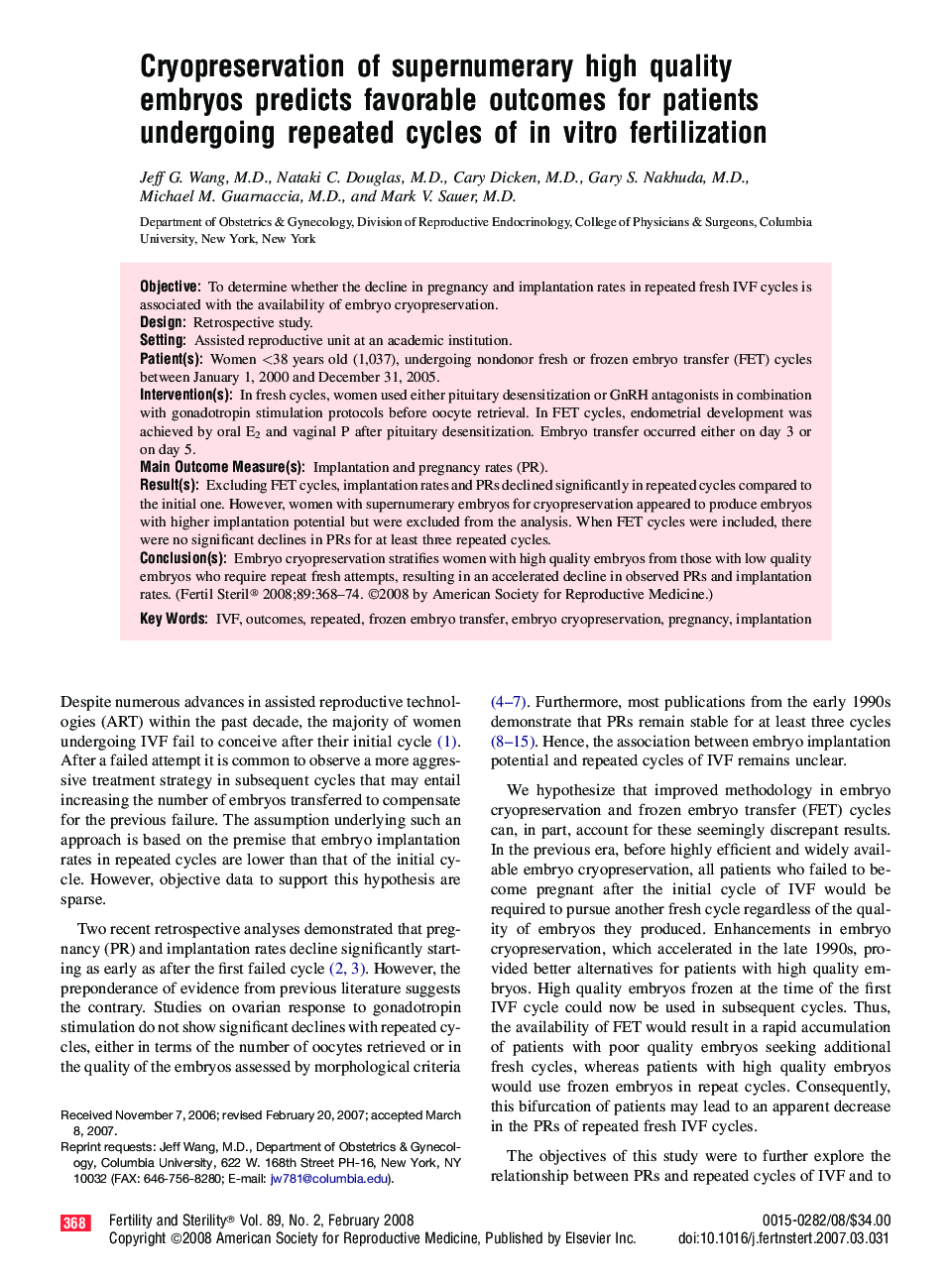| Article ID | Journal | Published Year | Pages | File Type |
|---|---|---|---|---|
| 3939422 | Fertility and Sterility | 2008 | 7 Pages |
ObjectiveTo determine whether the decline in pregnancy and implantation rates in repeated fresh IVF cycles is associated with the availability of embryo cryopreservation.DesignRetrospective study.SettingAssisted reproductive unit at an academic institution.Patient(s)Women <38 years old (1,037), undergoing nondonor fresh or frozen embryo transfer (FET) cycles between January 1, 2000 and December 31, 2005.Intervention(s)In fresh cycles, women used either pituitary desensitization or GnRH antagonists in combination with gonadotropin stimulation protocols before oocyte retrieval. In FET cycles, endometrial development was achieved by oral E2 and vaginal P after pituitary desensitization. Embryo transfer occurred either on day 3 or on day 5.Main Outcome Measure(s)Implantation and pregnancy rates (PR).Result(s)Excluding FET cycles, implantation rates and PRs declined significantly in repeated cycles compared to the initial one. However, women with supernumerary embryos for cryopreservation appeared to produce embryos with higher implantation potential but were excluded from the analysis. When FET cycles were included, there were no significant declines in PRs for at least three repeated cycles.Conclusion(s)Embryo cryopreservation stratifies women with high quality embryos from those with low quality embryos who require repeat fresh attempts, resulting in an accelerated decline in observed PRs and implantation rates.
